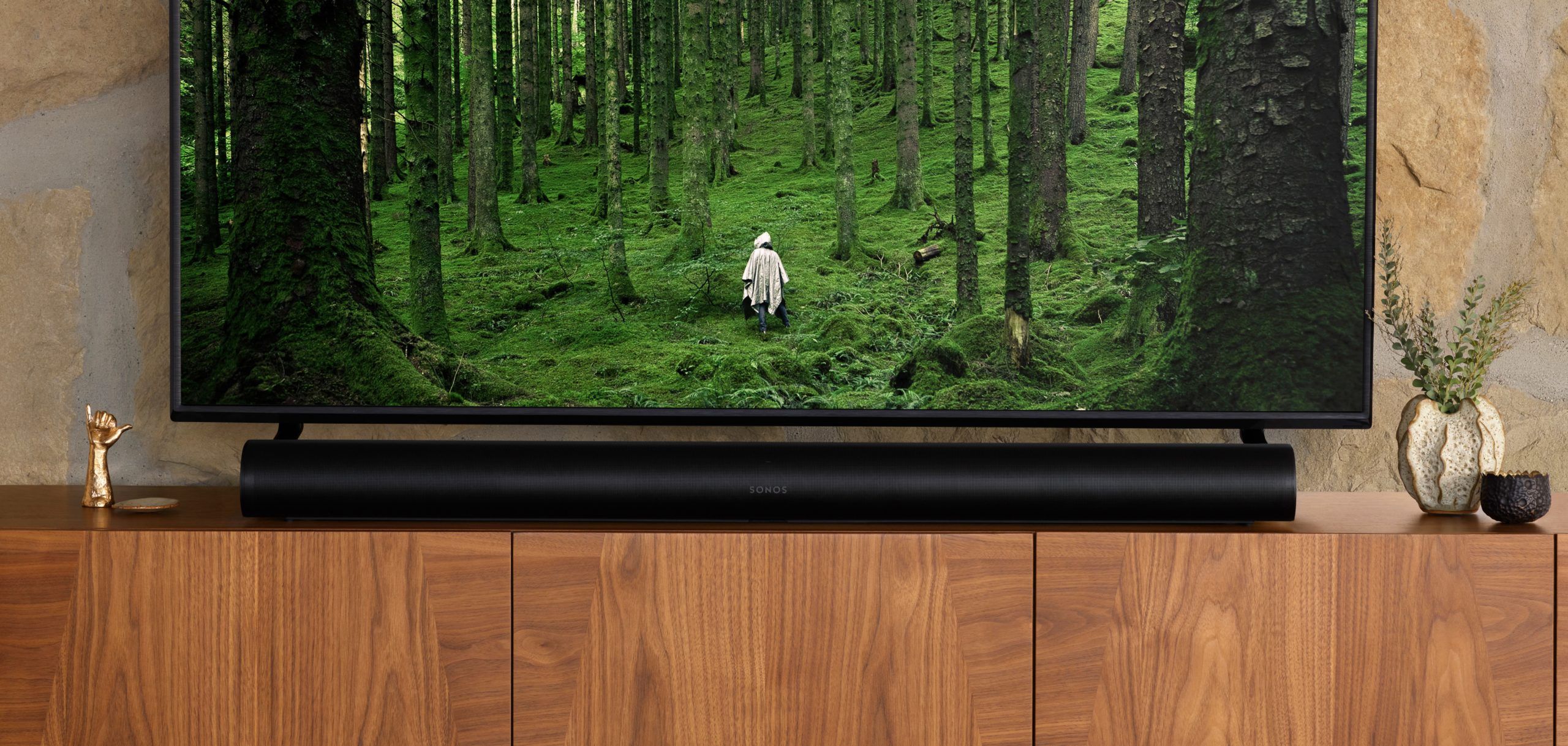Today Sonos is unveiling three new products, headlined by the Sonos Arc: a new bigger premium soundbar sporting 11 drivers (eight woofers and three tweeters) with Dolby Atmos, dynamic Trueplay sound tuning, and HDMI eARC support. Alongside it are two new refreshes for the company's existing lineup: A new Sonos Sub Gen 3 and Sonos Five, all available on June 10th.
Sonos Arc
Usually, Sonos announces its hardware with a snazzy hands-on event, which makes it easy for folks like me to actually listen to it and get a feel for the quality and performance. But in these becovid times, all we have to go on is press releases and remote briefings, so I can't tell you what Sonos' new Arc might sound like in person, though I am familiar with the company's products in general, and I expect that it sounds good.
The Arc is bigger than the company's previous soundbar and packs more of a punch. It has 11 drivers in total (eight elliptical woofers and three angled silk-dome tweeters) powered by eleven separate class-D amplifiers. Sonos doesn't publish wattage details for its products, but it should thump.
Further enhancing that sound is Sonos' Trueplay software, which I got to experience with the Move portable speaker last year. It allows the speaker to dynamically tune its sound to better fit its specific position and environment, down to details like adjusting delay for reflections in different directions — it's pretty wild. The Arc also has a sensor that can detect when it's been wall-mounted, tuning audio to better suit that position. In more traditional sound customization, there's an EQ, plus specific sound profiles like a Speech Enhancement mode and Night Sound mode, which should be self-explanatory.
The Arc also packs some of the latest home theater features, like HDMI eARC support for simple and quick setup, plus Dolby Atmos. A four far-field microphone array is present for voice assistant support (Google Assitant and Alexa are both built-in), and it works with Apple AirPlay 2. You can even control it with your existing remotes; it has a built-in learning IR receiver.
If you need a bit more bass, it can be paired with one of the company's subwoofers (including the new Sonos Sub Gen 3). Connectivity is courtesy of 2.4GHz Wi-Fi or Ethernet, and it measures a substantial 45" wide — 10" longer than the old Beam. The Sonos Arc comes in white or black, and will cost $800, with availability set for June 10th. This will replace the Playbar and Playbase in the company's current lineup.
Sonos Five
The new Sonos Five replaces the Play 5 Gen 2. We're told it offers a similar sound with updated internals like more memory, faster hardware, and a new wireless radio, all packaged in a completely monochrome look.
It gets you three woofers, three tweeters, powered by six amplifiers. The same Trueplay functionality can be found here, plus an analog line-in. You can pair speakers together for stereo use, and control it via the Google Assistant. It connects to your home network with 2.4GHz Wi-Fi and Ethernet, and it's also compatible with Apple Airplay 2.
Availability is set for June 10th, with prices at $500.
Sonos Sub Gen 3
The Sonos Sub Gen 3 is also a more incremental update, with a similar design to the previous/existing hardware and updated internals like a new radio and faster performance.
It packs two force-canceling drivers, paired with two amplifiers, and frequency response as low as 25Hz. It has Trueplay support, an adjustable EQ, and automatic settings adjustment when used with paired Sonos speakers.
Again, Wi-Fi and Ethernet are available. It measures at 15.3" x 6.2" x 15.8", weighs a chunky 36.3 lbs, and comes in white or black, with prices set at $700 and availability on June 10th.
All of Sonos's new products use the company's new S2 app, which is replacing the older original Sonos Connect app. If you plan on picking up one of these products for your existing Sonos setup, you might need to make sure that all your older hardware is compatible with the new app, as some devices will be left behind on the old version.

